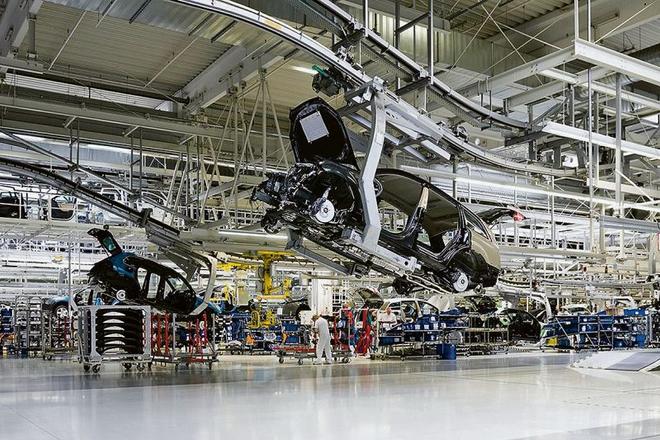AUTOMOTIVE production in Slovakia continues to grow even though carmakers operating in the country are not immune to the impacts of shrinking car sales throughout Europe. Despite this, they set new records last year and their outlook for 2013 remains positive. This is due in part to the varied classes of cars they produce and export, and to the fact that they do not focus exclusively on the European market. But they see manufacturing cars with higher added value and continued innovation as the only way to keep the Slovak automotive industry competitive. To achieve this, carmakers warn they need a qualified labour force and that changes in the current education system are therefore of crucial importance.
Carmakers in Slovakia manufactured a total of 926,555 cars in 2012, a 44.9-percent increase compared with the previous year, due especially to the launch of new models and extending production in factories in Trnava and Žilina to a third shift.
“Even the biggest optimists did not expect this [high level of growth in car production],” Jaroslav Holeček, the president and chairman of the Automotive Industry Association of the Slovak Republic (ZAP), said in mid April when announcing the official results of the automotive industry for 2012. “This is a result which pleases us very much.”
To highlight this high number, Holeček cited production of about 450,000 cars in Italy last year.
Thus, having produced 171 cars per 1,000 citizens (up from 118 in 2011), Slovakia became the biggest car producer in the world, followed by the Czech Republic. The EU average was 38 cars per 1000 citizens in 2011.
Volkswagen Bratislava (VW BA) manufactured the highest number of cars, 419,000, followed by Žilina-based Kia Motors Slovakia with 292,050 and Trnava-based PSA Peugeot Citroën Slovakia with nearly 215,000 cars.
A red flag went up for European carmakers in March this year when new car sales decreased for the 18th consecutive month, and the outlook is not positive. Carmakers in Slovakia have been affected by this decrease as well, since most of what they produce is exported. Cars and car-related components make up one quarter of Slovakia’s exports. But carmakers in Slovakia are not fully dependent on exports to the European market, as they also export cars to Russia and China.
“Plants [in Slovakia] do not manufacture cars of one class,” said Holeček. “They produce cars for global markets. This is our advantage.”
This is a factor when determining prospects for 2013, during which Holeček expects carmakers in Slovakia to produce about 930,000 cars.
The launch of new models should contribute to this increase. Kia Motors Slovakia started production of the new Kia pro_cee ’d in mid February, and PSA Peugeot Citroën Slovakia launched production of the new Peugeot 208 model for the British market in late April. Volkswagen Slovakia will begin production of the first electric car under the VW label, e-up!, in the second half of 2013. Vladimír Machalík, spokesperson for Volkswagen Slovakia, specified for The Slovak Spectator that they need to retrain 3,500 workers.
“The Volkswagen plant in Bratislava is the first plant out of all 100 plants of the VW concern around the world, which will manufacture an electric car,” said Machalík.
But out of all cars produced in Slovakia, only a handful will remain in the country, with the number of passenger and small commercial vehicles sold domestically reaching about 70,000 annually. Car sales have decreased in Slovakia too, due in part to special registration fees for cars with bigger engines introduced late last year. Just in the first quarter of 2013, domestic passenger car sales shrank by 12.63 percent, year on year. But Holeček sees room for improvement in this area, given that only every fourth Slovak owns a car, while the EU average is every second person.
The Slovak automotive industry realises that there are limits to how high a country like Slovakia can go in terms of boosting its car production.
“We have to realise that the number of cars produced will not keep increasing forever,” said Jozef Uhrík, the honorary chairman of the ZAP. “It is necessary to focus more deeply on science and research.”
He believes this situation in Slovakia is improving, while car producers, as well as their sub-contractors, are expanding their research and development capacities here. In this respect he pointed to the country’s unfavourable situation in education, especially at secondary schools.
But while companies already present in Slovakia are able to partially handle this problem through the establishment of their own specialised education centres, insufficient production of specialists is negatively affecting the business environment and may discourage new investors from coming to Slovakia.
According to ZAP, out of 50,000 graduates emerging from secondary schools annually, 30 percent remain unemployed and fewer than 10 percent find work in the field in which they studied. To deal with this dilemma, ZAP proposes to return to the so-called dual system, within which students obtain more skills directly through companies. Holeček also considers it an anomaly that 61 percent of secondary school graduates enrol in universities, adding that in Switzerland it is only 21 percent.
Another sore point for carmakers is the country’s unfinished highway infrastructure. Due to the lack of highways in the eastern part of the country, only 72 sub-contractors are located in eastern Slovakia, while as many as 202 are in western Slovakia.
For the future Holeček considers it important to change the character of Slovakia’s current production-oriented economy to one focused also on research and development.
“Without research and development we will not secure the competitiveness of Slovakia’s automotive industry,” he warned.



 Car production rocketed in 2012. (source: Courtesy of VW BA)
Car production rocketed in 2012. (source: Courtesy of VW BA)